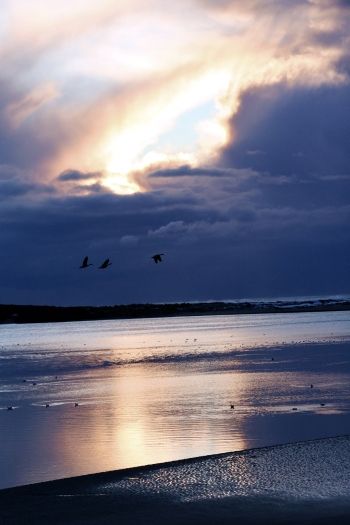
Publisher:
Bonnie King
CONTACT:
Newsroom@Salem-news.com
Advertising:
Adsales@Salem-news.com

~Truth~
~Justice~
~Peace~
TJP
Aug-31-2023 13:21

 TweetFollow @OregonNews
TweetFollow @OregonNews
Creating Art: If It's Fun, It's Alive
Robert C. Koehler special to Salem-News.comSo why do I care about art? Indeed, why now?
 Photography by Jon Monroe, Lincoln City, Oregon |
(PORTLAND, Ore.) - As I trek toward the Great Unknown, as life’s struggles seem to intensify, some odd questions keep recurring.
Art — what is it again? Why does it matter? How does it matter? What does it mean to be “good” at it?
That last question, in particular, can cut like barbed wire — especially if you’ve been swimming all your life in a sense of mediocrity, having learned that the Temple of Art is the home of the blessed elite. There’s Mona Lisa, then there are scribbles and doodles: baby stuff. End of discussion. Your grade is C-minus. Welcome to consumer culture.
So why do I care about art? Indeed, why now? As I grow older (by which I mean “old”), I refuse, refuse, refuse to retire: to quit writing, to quit believing I’m doing something that matters... to quit believing that humanity is collective and, at the deepest levels of our being, we all participate in this collective.
This is what I call art, even though I don’t know what I mean by that. Or at least I don’t mean something that’s simple and certain, or even particularly serious — at least not in an academic sense. Serious can be fun.
Yeah, really. This is a relatively new bit of awareness for me, for which I thank a number of friends, who have, you might say, pulled me out of a trance of certainty.
In particular I thank Dawi, a poet who showed us some of the recent drawings he’s been doing. They woke me up. I remembered the feel of a drafting pen in my hand.
I loved to draw, once upon a time — to scratch and scrape a fine penpoint across paper, to let the lines wiggle and squirm and dance. Yet somehow they were mixed with precision. Sometimes a face would emerge. What mattered was that my childhood emerged.
Was it any good? I felt it was as I drew, but it never was good enough — not for a drawing career of any sort to emerge. And eventually I set the pen aside, or mostly aside. I stopped drawing on a regular basis. I knew I wouldn’t find fame. I wouldn’t make money. I needed a serious career and this wouldn’t be it.
But after Dawi’s art woke me up, and I thought about all the time I waste in the present moment, I started scribbling again, because why not? Take my time. Enjoy.
I started splotching random colors on the page, mixed with wiggling lines and black and white checks. I found myself immersed once more in childhood wonder. A mantra popped into my head: If it’s fun, it means it’s alive.
And it struck me that this is art. This is how it should be defined. This is how it should be taught.
But there’s more: Art, or the effort to create art, is always aiming at something, though usually not something obvious. There’s ache and awe in the creative process, quietly present with the fun. When I begin a project, when I feel it start to matter, I think of it as a reach into humanity’s collective, evolving whole.
Careful! This gets quickly dangerous. Here’s where I want it to be good — you know, objectively good/ Unique, original, special. That wanting can quickly kill the art, yet somehow — paradoxically — it’s part of the process.
And then Alison came for a visit: my daughter, the stained-glass artist, who lives in Paris — who designs, creates and installs stained-glass windows for people. She also writes poetry. She came to Chicago to see her dad, to connect with lifelong friends, and more. She has a connection with a man who has worked in stained glass all his life, who’s ready to retire.
He has an enormous collection of stained-glass pieces that he accumulated over the years, including church-window fragments. Some of them are stunningly beautiful. They can’t simply be left to gather dust. Maybe a new home is possible.
And after Alison spent a day at his studio, she and I — can you believe it? — talked about the nature of art, the nature of creativity. She made an interesting distinction as she talked about her stained-glass work: the difference between shards and fragments.
Shards are pieces of broken glass — perhaps violently broken. She feels freer to give them new life. Fragments, on the other hand, preserve a closer link to their original whole. They may be part of a broken church window or some other historic work. Both are often beautiful and radiant, but the less broken they are, the more they still communicate what they once were and the less free she feels to reshape them.
This got my mind spinning. I don’t work with stained glass, but I couldn’t stop thinking about fragments of a shattered church window, and imagining myself creating something with them— mixing art and God, you might say. Mixing fun and spirit. And it felt like the essence of creativity.
When I taught writing over the years — at elementary, high-school and college levels — the essence of my message to the students, regardless of their age, was: We are all writers. We all have our own voices. Learning to write means finding that voice.
And those voices, I now realize, are full of both shards and fragments: craft and spirit. This is art, regardless of genre. Art is fun. Art is alive.
 Robert Koehler, Writer, syndicated by PeaceVoice, is a Chicago award-winning journalist and editor. He is the author of Courage Grows Strong at the Wound.
Robert Koehler, Writer, syndicated by PeaceVoice, is a Chicago award-winning journalist and editor. He is the author of Courage Grows Strong at the Wound.
Contact him at koehlercw@gmail.com or visit his website at commonwonders.com
.Articles for August 31, 2023 |

Quick Links
DINING
Willamette UniversityGoudy Commons Cafe
Dine on the Queen
Willamette Queen Sternwheeler
MUST SEE SALEM
Oregon Capitol ToursCapitol History Gateway
Willamette River Ride
Willamette Queen Sternwheeler
Historic Home Tours:
Deepwood Museum
The Bush House
Gaiety Hollow Garden
AUCTIONS - APPRAISALS
Auction Masters & AppraisalsCONSTRUCTION SERVICES
Roofing and ContractingSheridan, Ore.
ONLINE SHOPPING
Special Occasion DressesAdvertise with Salem-News
Contact:AdSales@Salem-News.com


googlec507860f6901db00.html
Salem-News.com:
Terms of Service | Privacy Policy
All comments and messages are approved by people and self promotional links or unacceptable comments are denied.
[Return to Top]
©2026 Salem-News.com. All opinions expressed in this article are those of the author and do not necessarily reflect those of Salem-News.com.